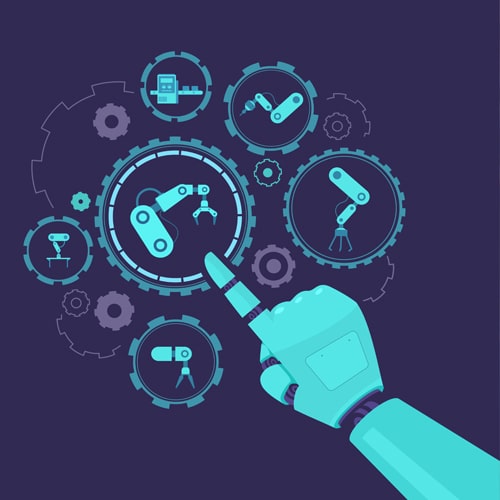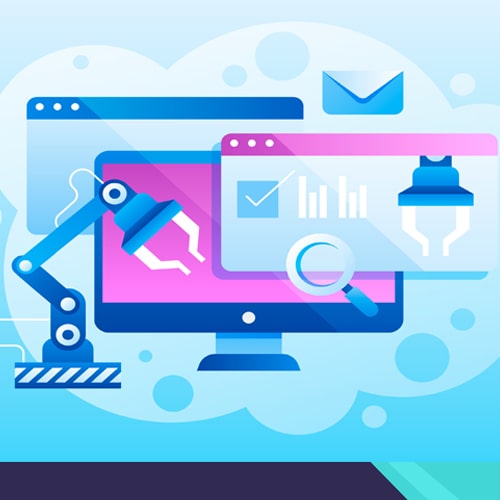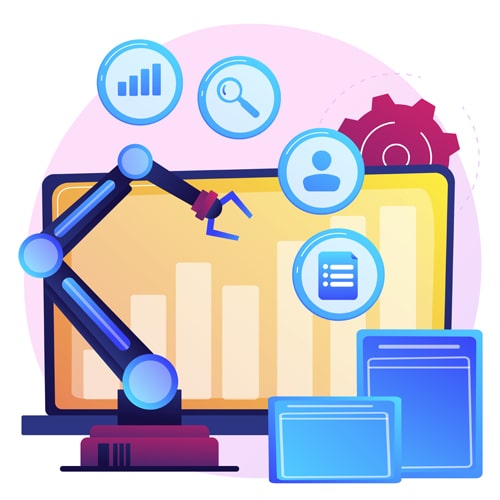
Smart IOT Solutions
The best choice for growth of your comapny


Industrial Automation
Connected Worker Solutions for Maintenance, Operations and Warehousing
The fastest way to grow your business with the leader in Technology
Check out our services and features.
We are specialized in Smart IOT SolutionsIndustrial AutomationIOT Application Development
Alsystemz Solutions specializes in implementing smart Industrial Internet of Things (IIoT) technology to help businesses connect, monitor, and manage industrial equipment. Our solutions enable seamless integration of sensors, devices, and software to provide real-time insights into your operations, allowing for greater control and efficiency.


Our Services
Assess Current Industrial Processes
• Process Mapping: Start by mapping out the current industrial processes. Identify each step, the people involved, equipment used, and data flow.
Select Automation Technologies
• Industrial Robots: Consider robots for tasks that require precision, repetition, or hazardous environments.
Design the Automated System
• System Architecture: Design the architecture, considering hardware and software components, data flow, and communication protocols.
Implement the Automated System
• Installation and Integration: Install hardware and integrate it with existing systems. Coordinate with various stakeholders to ensure smooth implementation.
Training and Documentation
• Employee Training: Train employees on how to operate and maintain the automated system. Ensure safety protocols are understood.
Monitor and Optimize
• Continuous Monitoring: Implement real-time monitoring to track system performance and detect issues early.


Assess Current Industrial Processes
- Process Mapping: Start by mapping out the current industrial processes. Identify each step, the people involved, equipment used, and data flow.
- Identify Bottlenecks: Determine where delays, inefficiencies, or errors occur. This could be due to manual tasks, outdated equipment, or communication gaps.
- Define Objectives: Establish clear objectives for automation, such as reducing manual labour, increasing throughput, or improving accuracy.
Select Automation Technologies
- Industrial Robots: Consider robots for tasks that require precision, repetition, or hazardous environments.
- Programmable Logic Controllers (PLCs): Use PLCs to control and automate machinery and processes.
- Sensors and Actuators: Integrate sensors to collect data and actuators to control physical actions in the system.
- Human-Machine Interface (HMI): Implement user-friendly interfaces to monitor and control the automated system.
- Industrial Internet of Things (IIoT): Utilize IIoT for real-time monitoring, data analytics, and connectivity across different parts of the process.
- Software Solutions: Consider custom software or industry-specific applications to manage and coordinate automated tasks.




Design the Automated System
- System Architecture: Design the architecture, considering hardware and software components, data flow, and communication protocols.
- Redundancy and Reliability: Ensure critical systems have redundancy to avoid downtime. Plan for regular maintenance and support.
- Safety and Compliance: Adhere to industry standards and safety regulations. Implement safety mechanisms such as emergency stop systems, guards, and safety sensors.
- Scalability: Design with scalability in mind to accommodate future growth or changes in the process.
Implement the Automated System
- Installation and Integration: Install hardware and integrate it with existing systems. Coordinate with various stakeholders to ensure smooth implementation.
- Programming and Configuration: Program PLCs, configure sensors, and set up the software for optimal operation.
- Testing and Calibration: Conduct thorough testing to ensure everything works as expected. Calibrate sensors and other equipment as needed.




Training and Documentation
- Employee Training: Train employees on how to operate and maintain the automated system. Ensure safety protocols are understood.
- Create Documentation: Develop comprehensive documentation for the system, including user manuals, maintenance schedules, and troubleshooting guides.
Monitor and Optimize
- Continuous Monitoring: Implement real-time monitoring to track system performance and detect issues early.
- Data Analysis: Analyze data to identify trends and further optimization opportunities.
- Regular Maintenance: Establish a regular maintenance schedule to ensure system longevity and reliability.
- Feedback Loop: Create a feedback loop to gather input from employees and stakeholders, and use it to continuously improve the automated system.


